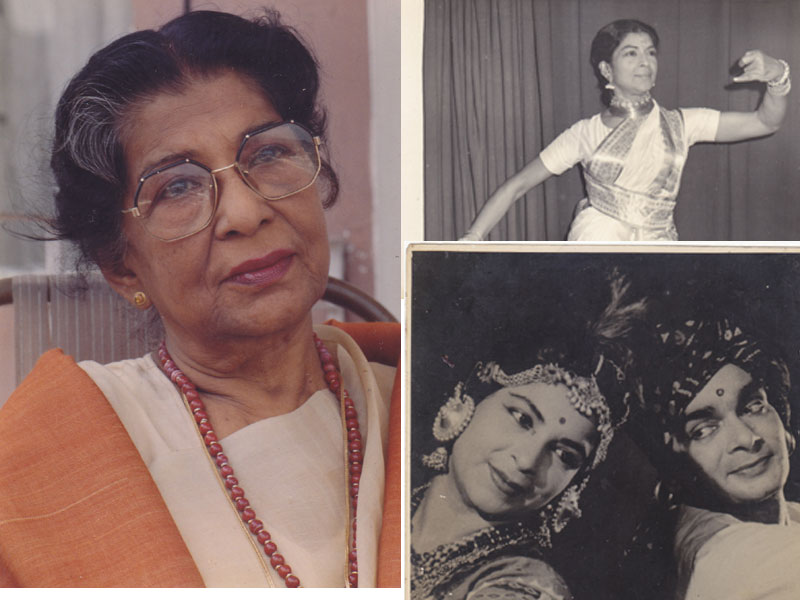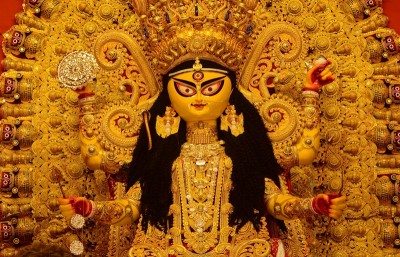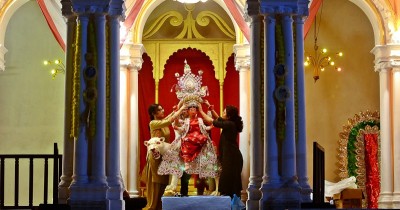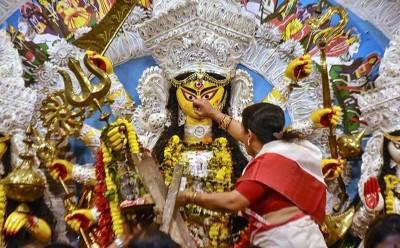 TRIBUTE
TRIBUTE
Amala Shankar: Living life to the lees
She was 94 when I last met her in her apartment in Ballygunge. Though a bit frail , she had been suffering from fever a few days ago Amala Shankar told me, she was as gracious as ever and was ready for a chat. What was striking was how simple she was, with no air despite being so famous in her heyday as a danseuse and choreographer and carried on her legacy till late into life.
As she departs this world at the age of 101, I remember her twinkling eyes, the joie de vivre she exuded and the razor sharp memory as she reminisced about her childhood in Batajor in Jessore district, now in Bangladesh, and even recited poems. Her family later shifted to Calcutta (Kolkata).
Amala Shankar found her métier in the arena of dance and later was an able companion to Uday Shankar who opened a new vista with his creative dance and introduced the western audience to the richness of Indian dance.
Born Amala Nandy, she said that she was hugely influenced by her father Akshay Nandy’s liberal ideas. “He also believed that women should get an education, opened a school and edited a magazine.”
Those were the days of the Swadeshi movement, and taking the lead from Mahatma Gandhi’s call for self- reliance she and other children were even taught how to make salt from locally available material at the call of the Dandi March Movement by Gandhi.
At a young age Nandy travelled to London in 1924 accompanying her father to exhibit his products, gold ornaments with a base of copper, to make it more affordable for ordinary women. “He was actually offered free passage and hospitality by the British government, but he refused and made his own arrangements though it was not easy,” Shankar said with pride. It was these values instilled in her that remained with her in adult life, she said.
Six years later, she was in Paris for another exhibition where her father participated. The Shankar family, including sitar maestro Ravi Shankar, her brother-in-law, were there. It was a performance by Uday Sahnkar that changed her life.
“It was a divine experience. I felt proud to be an Indian when we were still ruled by the British,” she reminisced. The love of dance took over her and later she joined the dance school Uday Shankar had established in Almora in 1942. She later married him, almost two decades older to her. They danced together in Kalpana (1948) directed by Uday Shankar. The film was screened at the Cannes Film Festival in 2012, restored by director Martin Scorsese’s World Cinema Foundation. And she walked on the red carpet too.
Shankar lived life to the lees, literally. She even performed at the age of 92 enacting the role of King Janaka in a dance drama Sita Swayamvar. She showed me the paintings strewn around her in the room.
“I was never trained as a painter but I loved it and started painting on my own. Many of these paintings feature as backdrops of dance dramas of our house productions,” she informed.
She was an inspiration behind the Uday Shankar Cultural Centre which her son musician Ananda Shankar anchored until his untimely death and carried on by her daughter-in-law dancer Tanushree Shankar, and Mamata Shankar, her dancer-actress daughter who has her own dance school.
Shankar was associated with numerous organizations, like ‘Soi’, a platform for women writers initiated by late Nabaneeta Dev Sen.
With her death a chapter has closed in the performing art arena but she had also inspired many new talents in her lifetime. That is indeed the best gift a guru can receive.
(Ranjita Biswas is a well-known writer and journalist. A winner of Sahitya Akademi award for her translation of Assamese literature, she is also the editor of a feature service)
Support Our Journalism
We cannot do without you.. your contribution supports unbiased journalism
IBNS is not driven by any ism- not wokeism, not racism, not skewed secularism, not hyper right-wing or left liberal ideals, nor by any hardline religious beliefs or hyper nationalism. We want to serve you good old objective news, as they are. We do not judge or preach. We let people decide for themselves. We only try to present factual and well-sourced news.







